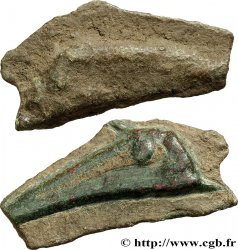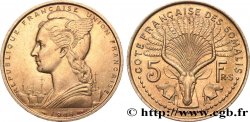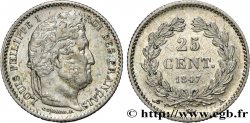120.00 €
Количество
Добавить в корзину

Тип Médaille, Érection de la Colonne Nationale, place Vendôme
Дата: 1800
Монетный двор / Город: 75 - Paris
Металл: copper
Диаметр: 54,5 mm
Ориентация осей монеты: 12 h.
Гравер DUVIVIER Benjamin (1730-1819)
Вес: 64,58 g.
Век: lisse
Пуансон: sans poinçon
Комментарии о состоянии
Patine marron hétérogène, présentant de l’usure sur certains hauts reliefs. Présence de quelques coups et rayures, notamment sur la tranche
Лицевая сторона
Аверс: легенда: BONAPARTE PREMIER CONSUL // CAMBACÉRÈS SECOND CONSUL / LEBRUN TROISIE.ME CONSUL / DE LA RÉPUBLIQUE / FRANÇAISE.
Аверс: описание: Buste de Bonaparte à droite ; au-dessous, légende en quatre lignes, signé : DU VIVIER.
Обратная сторона
Реверс: легенда: LE PEUPLE FRANÇAIS À SES DÉFENSEURS // PREMIERE PIERRE / DE LA COLONNE NATION-LE / POSÉE PAR / LUCIEN BONAPARTE / MINISTRE DE L'INTÉRIEUR / 25 MESSIDOR AN 8 / 14 JUILLET 1800.
Реверс: Описание: Légende circulaire et en sept lignes horizontales.
Комментарий
Cette médaille commémore le onzième anniversaire de la prise de la Bastille, le 14 juillet 1789. La construction d'une colonne dédiée à la Nation fut décidée le 20 mars 1800 (29 ventôse an VIII), Bonaparte Premier Consul fit "décréter l'érection, sur la place de la Concorde, d'une Colonne Nationale sur laquelle on inscrirait les noms de ceux qui auraient rendu des services importants à la Patrie", coll. Essling n° 848. Cette colonne ne fut jamais élevée. En revanche, Lucien, frère de Napoléon Bonaparte, posa sur la place Vendôme le 14 juillet 1800 la première pierre de la Colonne qui sera ensuite élevée à la gloire de Napoléon Ier. Il faudra encore attendre plus de trente ans pour voir une colonne sur la place de la Bastille qui ne commémore pas la prise de la Bastille, mais les journées de juillet 1830, qui virent la chute de Charles X et son remplacement par Louis-Philippe, connues sous le nom des "Trois Glorieuses". Au droit de notre médaille, Bonaparte est figuré seul, en habit de premier Consul tandis que Cambacérès et Lebrun sont rejetés à l'exergue et dans la légende. Au revers, pour l'une des premières fois, le calendrier républicain côtoie le calendrier grégorien qui fait sa réapparition. Il faudra néanmoins attendre le 1er janvier 1806 pour qu'il remplace définitivement le calendrier révolutionnaire.
This medal commemorates the eleventh anniversary of the storming of the Bastille, July 14, 1789. The construction of a column dedicated to the Nation was decided on March 20, 1800 (29 Ventôse Year VIII), Bonaparte First Consul had \\\"decreed the erection, on the Place de la Concorde, of a National Column on which would be inscribed the names of those who had rendered important services to the Fatherland\\\", coll. Essling No. 848. This column was never erected. On the other hand, Lucien, brother of Napoleon Bonaparte, laid the first stone of the Column on Place Vendôme on July 14, 1800, which would later be erected to the glory of Napoleon I.. It would be another thirty years before we saw a column on the Place de la Bastille that commemorated not the storming of the Bastille, but the July Days of 1830, which saw the fall of Charles X and his replacement by Louis-Philippe, known as the \\\"Three Glorious Days.\\\". On the right of our medal, Bonaparte is depicted alone, in the garb of First Consul, while Cambacérès and Lebrun are rejected in the exergue and in the legend.. On the reverse, for one of the first times, the Republican calendar sits alongside the Gregorian calendar, which is making a reappearance.. However, it was not until January 1, 1806 that it definitively replaced the revolutionary calendar.
This medal commemorates the eleventh anniversary of the storming of the Bastille, July 14, 1789. The construction of a column dedicated to the Nation was decided on March 20, 1800 (29 Ventôse Year VIII), Bonaparte First Consul had \\\"decreed the erection, on the Place de la Concorde, of a National Column on which would be inscribed the names of those who had rendered important services to the Fatherland\\\", coll. Essling No. 848. This column was never erected. On the other hand, Lucien, brother of Napoleon Bonaparte, laid the first stone of the Column on Place Vendôme on July 14, 1800, which would later be erected to the glory of Napoleon I.. It would be another thirty years before we saw a column on the Place de la Bastille that commemorated not the storming of the Bastille, but the July Days of 1830, which saw the fall of Charles X and his replacement by Louis-Philippe, known as the \\\"Three Glorious Days.\\\". On the right of our medal, Bonaparte is depicted alone, in the garb of First Consul, while Cambacérès and Lebrun are rejected in the exergue and in the legend.. On the reverse, for one of the first times, the Republican calendar sits alongside the Gregorian calendar, which is making a reappearance.. However, it was not until January 1, 1806 that it definitively replaced the revolutionary calendar.








 Cообщить об ошибке
Cообщить об ошибке Распечатать страницу
Распечатать страницу Отправить мой выбор
Отправить мой выбор Задать вопрос
Задать вопрос Consign / sell
Consign / sell
 Информация
Информация















